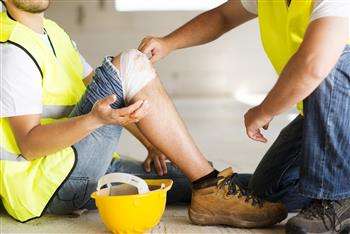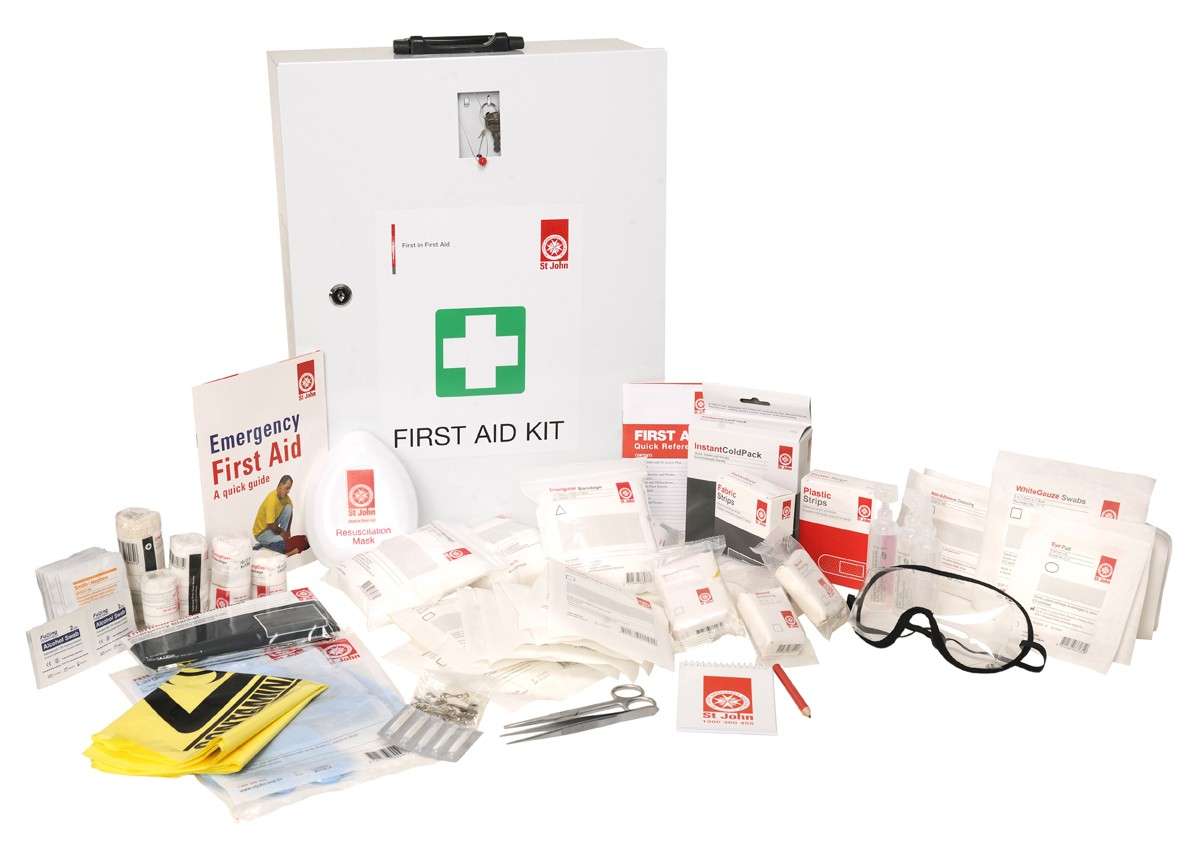First Aid Boxes and Health and Safety
People at work, both employees and visitors, can suffer injuries or get suddenly ill in a workplace. It is important to be able to provide immediate medical attention before emergency services arrive (in serious cases). Having a first aid kit and plan of action in place can save lives and prevent minor injuries becoming potentially major ones.
First aid boxes are legally required whenever more than five people are employed at a workplace. However, even with just one employee it is highly recommended. The equipment contained in the boxes need to be adequate and appropriate for the circumstances at your particular workplace. There are basic standard supplies required, and then additional items necessary for some high-risk industries, and this is determined after a thorough risk assessment.

The minimum first aid requirement for any place of work (where there are more than 5 employees) is the following:
- A suitably stocked first aid kit that is replenished as items are used
- An appointed person to take charge of providing care to the injured or ill. This appointed first aider should be properly trained, and a roster must be drawn up so that there is someone on duty every day.
- Information for employees on where the first aid box is kept, what to do in an emergency, and the specific protocol for the workplace when dealing with injuries. Special arrangements must be made for employees with reading or language difficulties. This information should be provided as part of the initiation process before their work commences, and includes contract personnel.

The following needs to be included in every basic first aid kit:
- Antiseptic
- Plasters
- Cotton wool and swabs
- Sterile gauze
- Forceps and scissors
- Triangular bandages and roller bandages
- Elastic adhesive
- Dressing strips
- First aid dressings
- Splints
- Latex gloves
- CPR mouth pieces
It is important to note that no tablets and medicines must be kept in the first aid box, even something as simple as headache tablets. There is no way of knowing if someone is allergic to a certain medication, if it could make a situation worse, or if there is an unknown problem with addiction.
Keep the following in mind when managing the first aid kit:
- Post a clear sign that indicates where the first aid boxes are kept, as well as the person in charge of the box (and its replenishment).
- A duty roster of first aiders should be displayed next to the box.
- Make sure that first aid supplies are available for your business’s particular type of work. For example, where a basic kit will suffice for a corporate office, additional equipment will be necessary for a mechanical workshop area.
- In some workplaces multiple first aid kits will be required for different work areas or levels. This is of particular importance for high-risk zones that involve machinery or other obvious hazards. The first aid kit must be easily and readily accessible, without needing to run upstairs to a different level, for instance.
- It is imperative that all supplies that are used are replaced immediately. Ideally, stock should be taken (by using a checklist) on a daily basis to ensure that no items are missing.
- Employees working in hazardous areas should be trained in basic emergency first aid, for the critical moments even before the box is fetched and opened. For example, if someone burns their hand, they should know to hold it under cold water immediately while someone fetches the first aid box.
Having a first aid box on site is one of the most critical aspects of adhering to health and safety legislation in the workplace. It can make the difference between life and death in some cases and the proper management of the first aid kit should not be taken lightly.




Comments (3)
What is the price of your basic refill kit for 1st aid boxes?
2017-10-16 11:44:50Hi There, please forward your request to contact@makrosafe.co.za and someone will be in touch
2018-02-14 08:41:10Greetings Request for a quotation of a First Aid box Box of latex gloves Plasters Regards Thuso 011 904 4300
2018-02-12 11:50:41Hi Thuso, please forward your request to contact@makrosafe.co.za and someone will be in touch
2018-02-14 08:40:49Quotation please
2020-02-24 16:58:52